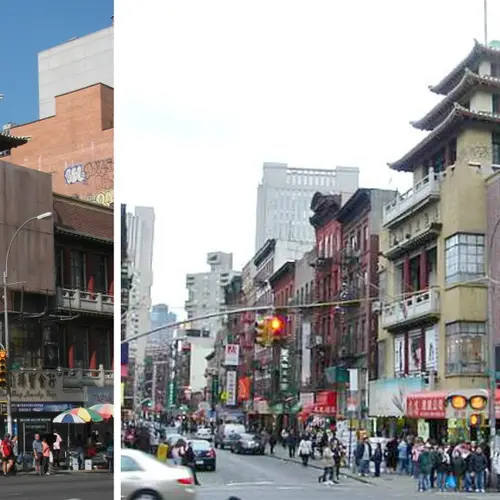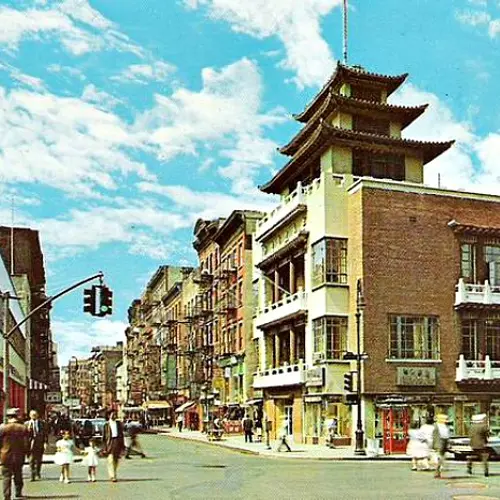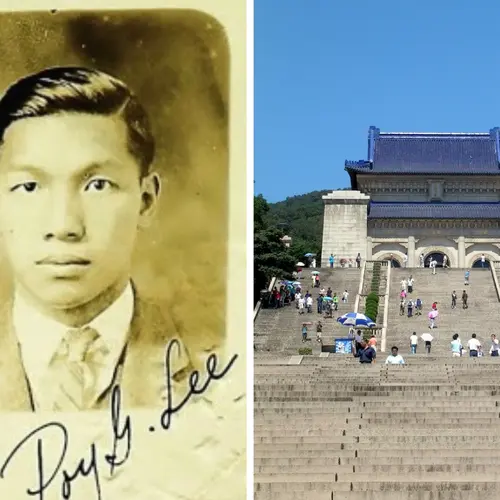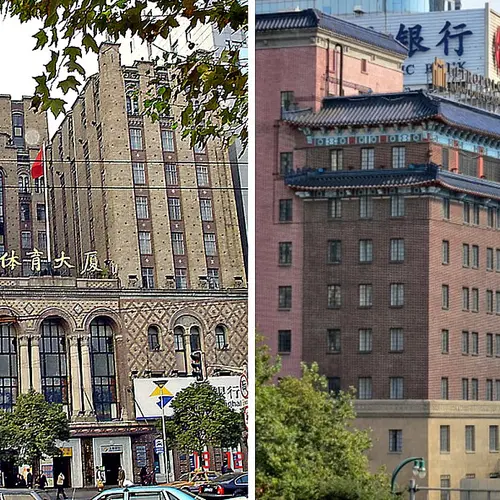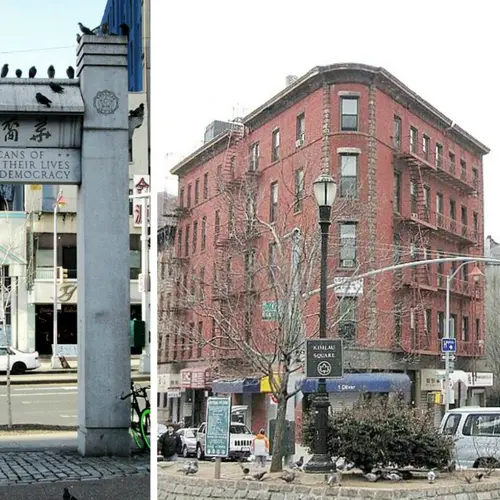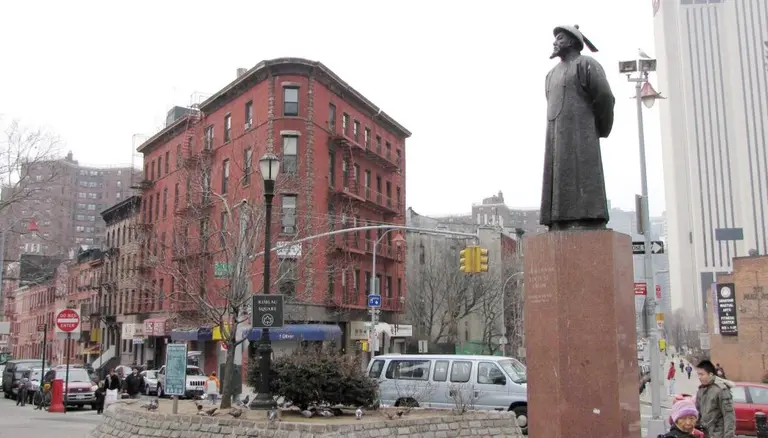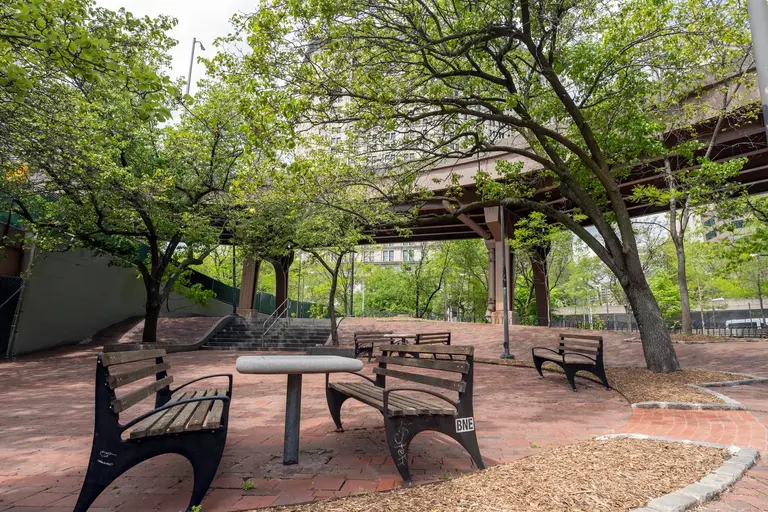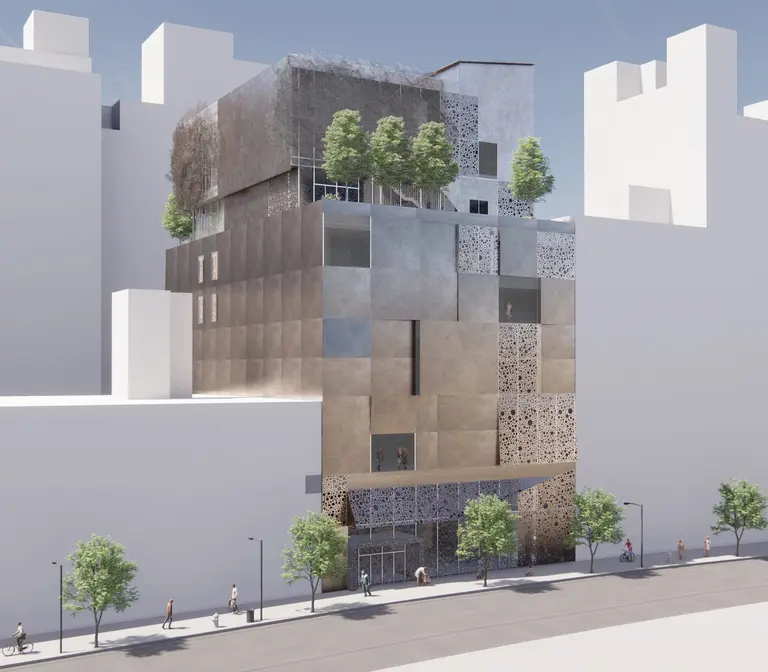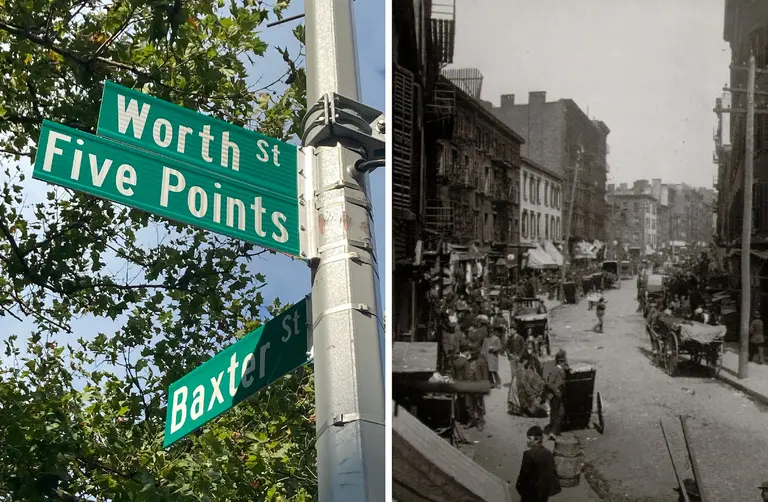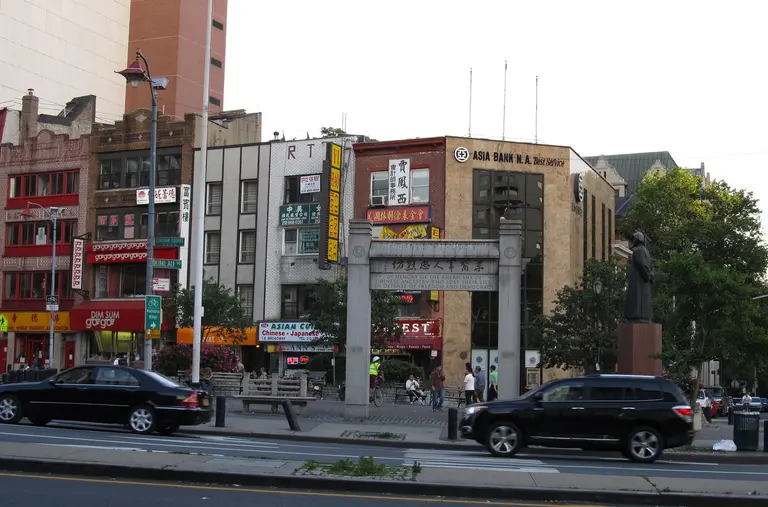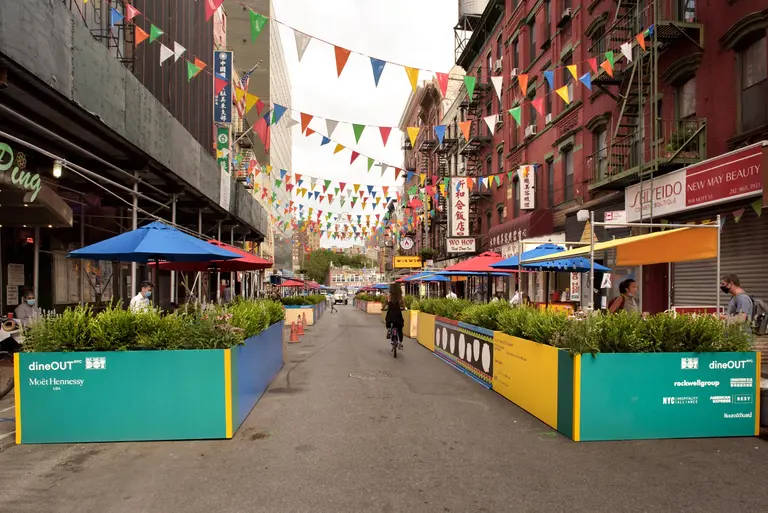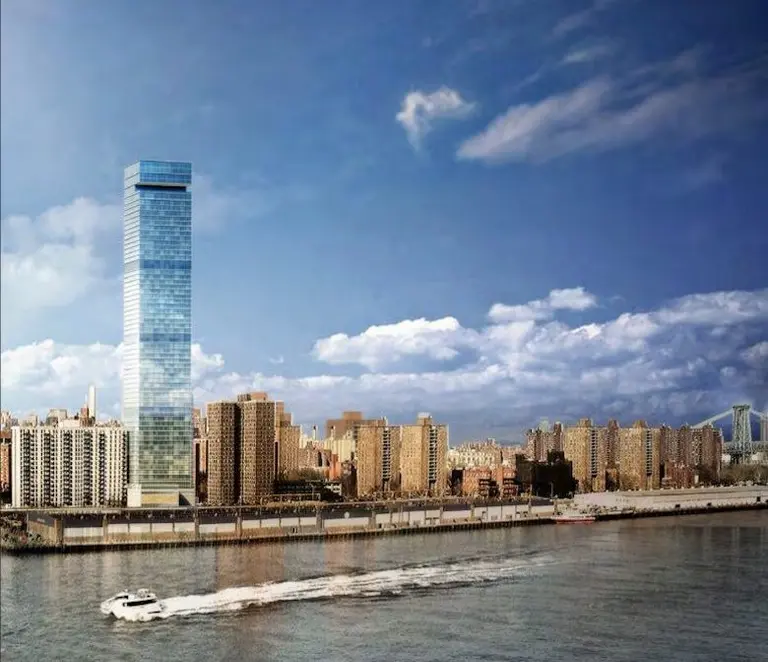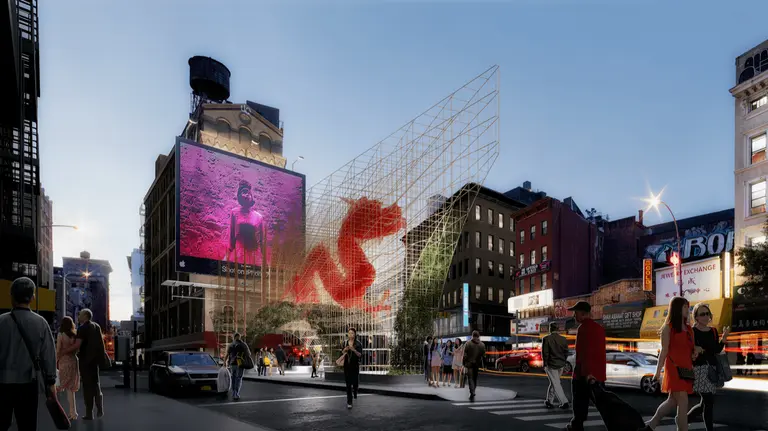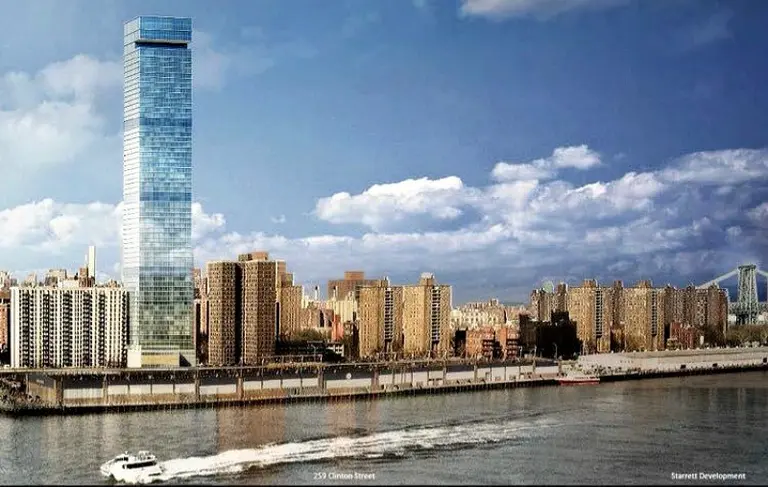The On Leong Tong Building: Chinese Architecture Brought to Life in NYC
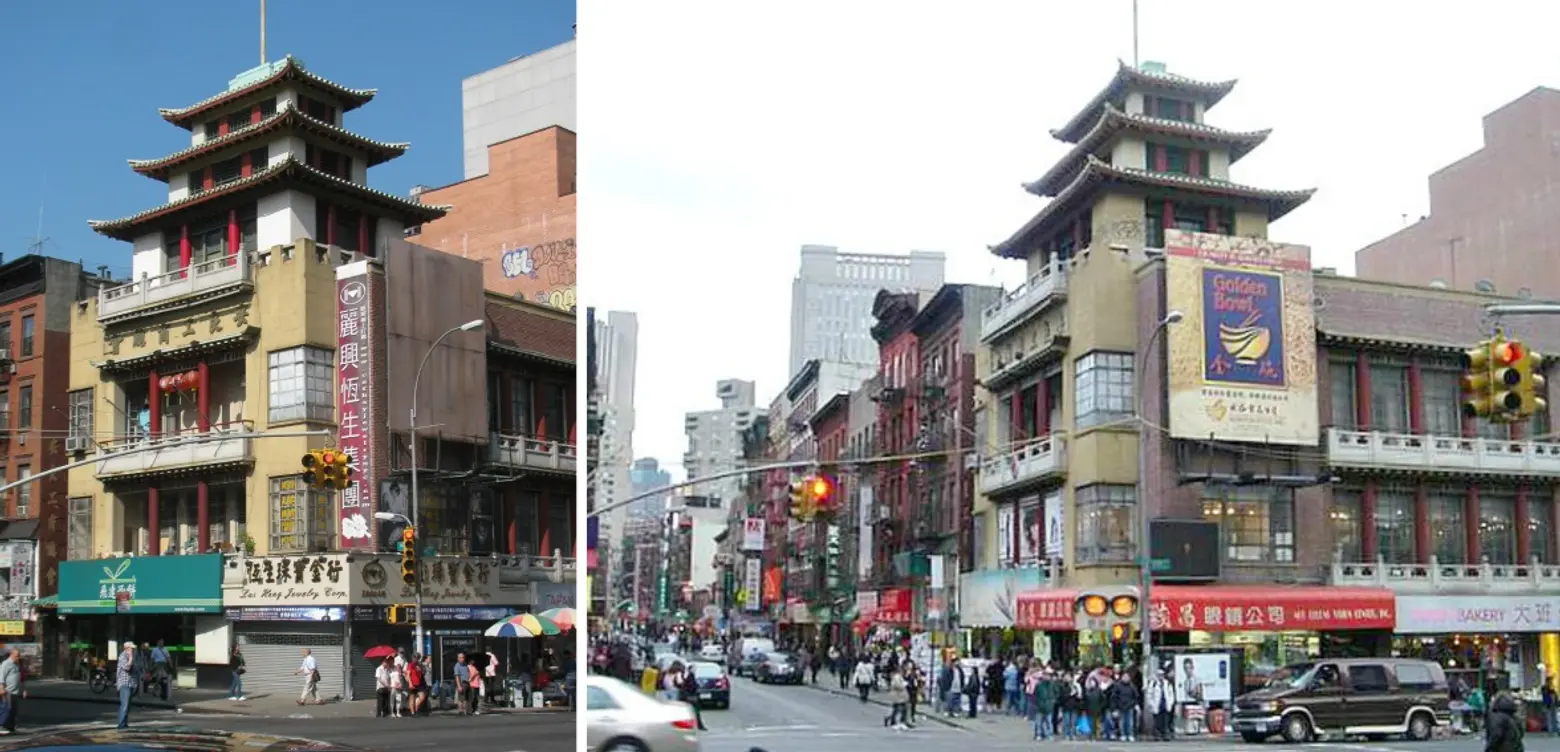
If you’re planning to head down to Chinatown for the celebration of the Lunar New Year, you’ll likely amble past the corner of Mott and Canal Streets, where there is a remarkable building like no other in New York. It’s called On Leong Tong, or, in English, the Merchants’ Association building. Built in 1950, it combines modernism (though you wouldn’t know it to look at it) with familiar Chinese architectural features—the pagoda roof, balconies, colorful columns and so on. Once you’ve seen it, you won’t forget it.
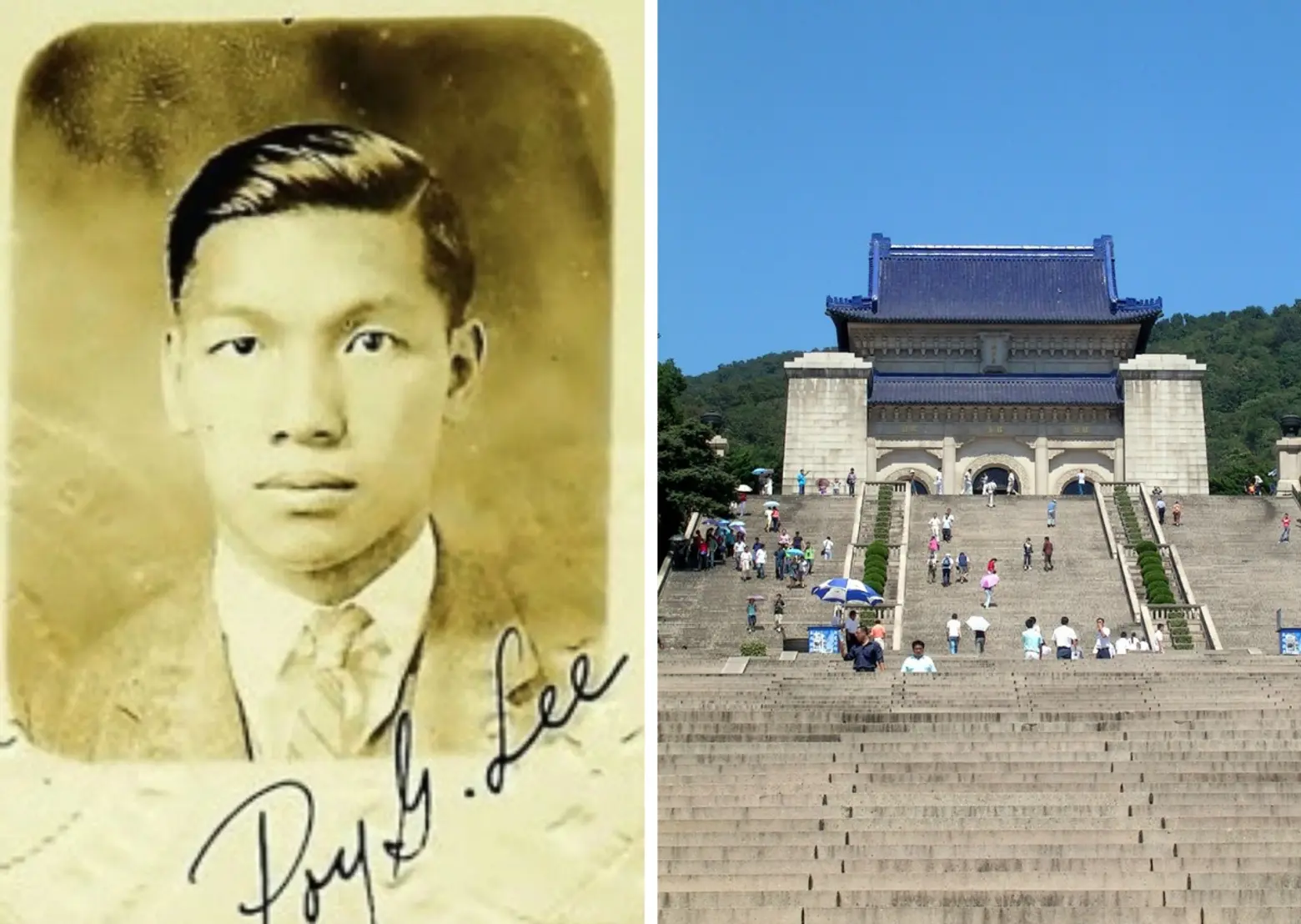 Poy Gum Lee’s 1932 passport photo via Shanghai Art Deco (L); Sun Yat-Sen Mausoleum via Wiki Commons (R)
Poy Gum Lee’s 1932 passport photo via Shanghai Art Deco (L); Sun Yat-Sen Mausoleum via Wiki Commons (R)
The building was designed by Chinatown native son, Poy Gum Lee, who was born in 1900 on Mott Street not far from this building. He was educated at Dewitt Clinton High School and then at Pratt Institute, the Massachusetts Institute of Technology and Columbia University, which included the Beaux Arts Institute; worked in New York City architecture firms; and then in 1927 was invited to work in China on the Shanghai YWCA. He worked on schools and universities, hospitals, theaters and other institutions as well, mainly in Shanghai. One of the most beautiful buildings he worked on, however, was not in Shanghai but Nanjing, the Sun Yat-Sen Mausoleum. Lee was working as an associate of architect Y.C. Lu, and when Lu became ill, Lee took over and finished the building after the older man’s death.
Poy Gum Lee is well known in China and has been studied extensively there. He is less well known in the U.S., but that should change when a special exhibition of his work opens this fall at the Museum of Chinese in America, curated by architectural historian and Associate Director of the Two Bridges Neighborhood Council Kerri Culhane. In an interview, Ms. Culhane said the 1920s and ’30s, when Lee became prominent, saw the development of Chinese Modernism as “a hybrid of Western Modern style incorporating Chinese elements to reflect the aspirations of the Nationalist period, to be very modern but also to embrace what was useful in the past and to reflect back on Chinese history.” A lot of Lee’s New York work, she said, is this combination–Art Deco or Art Moderne style together with traditional Chinese features. This is the first time a major study of his work has been undertaken in New York.
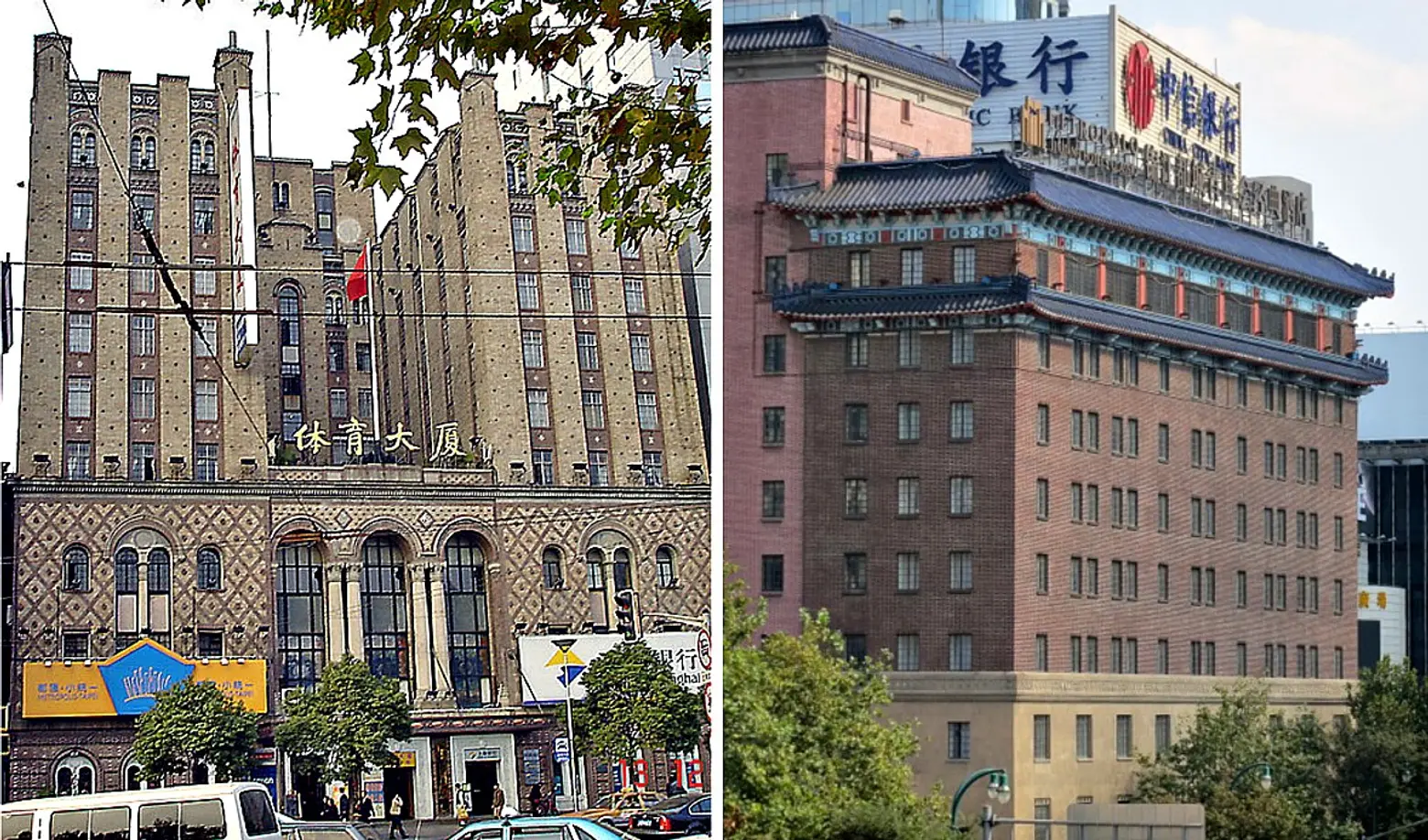 Nanjing YMCA via Wiki Commons (L); Chinese YMCA via Shanghai Art Deco (R)
Nanjing YMCA via Wiki Commons (L); Chinese YMCA via Shanghai Art Deco (R)
Lee’s success in China was assured, and he was one of the most famous architects there. As a leader, he worked to blend Western technologies and materials with traditional Chinese style. One of his concerns, according to Culhane, was to reveal Chinese identity through architecture, a point of view espoused by the Nationalist regime then in power. In 1944, the leader of the Nationalist party, Gen. Chiang Kai-shek began to confront Mao Tse-tung (now transliterated as Mao Zedong), who had risen to power by driving off the Japanese from the northern Chinese provinces during World War II. Chiang had promised the Chinese people that a democratic government would be established by the end of the World War, but the clash with Mao for leadership of China put that promise on hold. The two men failed to settle their differences; heavy fighting ensued, turning into a civil war that threw many people’s lives into turmoil, Poy Gum Lee’s among them. He returned to the United States in 1945. For a short time only, he was able to continue to manage his projects in China; then he focused his energies on his native New York.
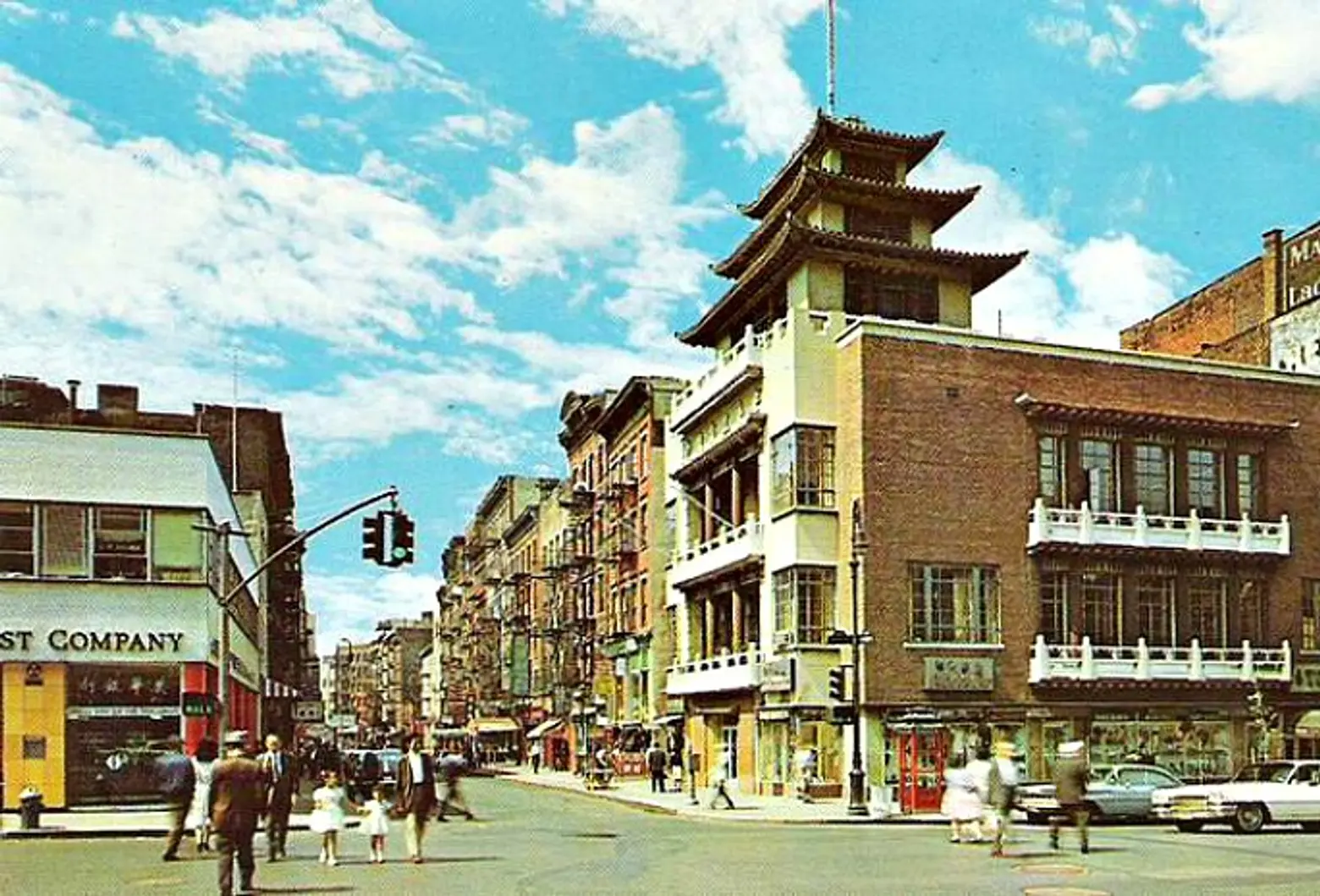
On Leong Tong and the view down Mott Street in 1962, via Outsiders NYC
After 18 years in China, it may have seemed strange to live and work again where he started out. Nevertheless, Lee soon became the architectural consultant for the Chinese Consolidated Benevolent Association, which he served in an extra-curricular capacity from 1946 to 1959. During that time, On Leong Tong was designed and built. From 1951 to 1962 Poy Gum Lee worked as a senior architect for the New York City Housing Authority, possibly through his acquaintance with Andrew J. Thomas (1875-1965), a self-taught architect who rose to prominence as the designer of housing, especially garden-apartment complexes. Thomas was the architect of record for the Merchants’ Association building, even though it looks more like Lee’s work.

On Leong Tong via Eden, Janine and Jim on flickr (L); via Outsiders NYC (R)
A tong is a mutual aid society representing businesses or families. Its role is to evoke place and family associations brought from China and focus on advancing the members’ commercial interests. In the early days, however, tongs were associated with street gangs. On Leon Tong has been called the first building with a history specific to the Chinese community, and it is certainly among the most prominent in Chinatown both historically and from a design point of view.
Along with that “first” goes another: Poy Gum Lee was the first well-known Chinese-American architect working in Chinatown. “His Chinatown work,” Culhane has said, “reflected an east-west hybrid of form and function, variously called Chinese Revival, Chinese Renaissance or Chinese Modern, which owed as much to the influence of American architectural education on the first generation of Chinese architects as it did to American Missionary building programs in China in the early 20th century.”
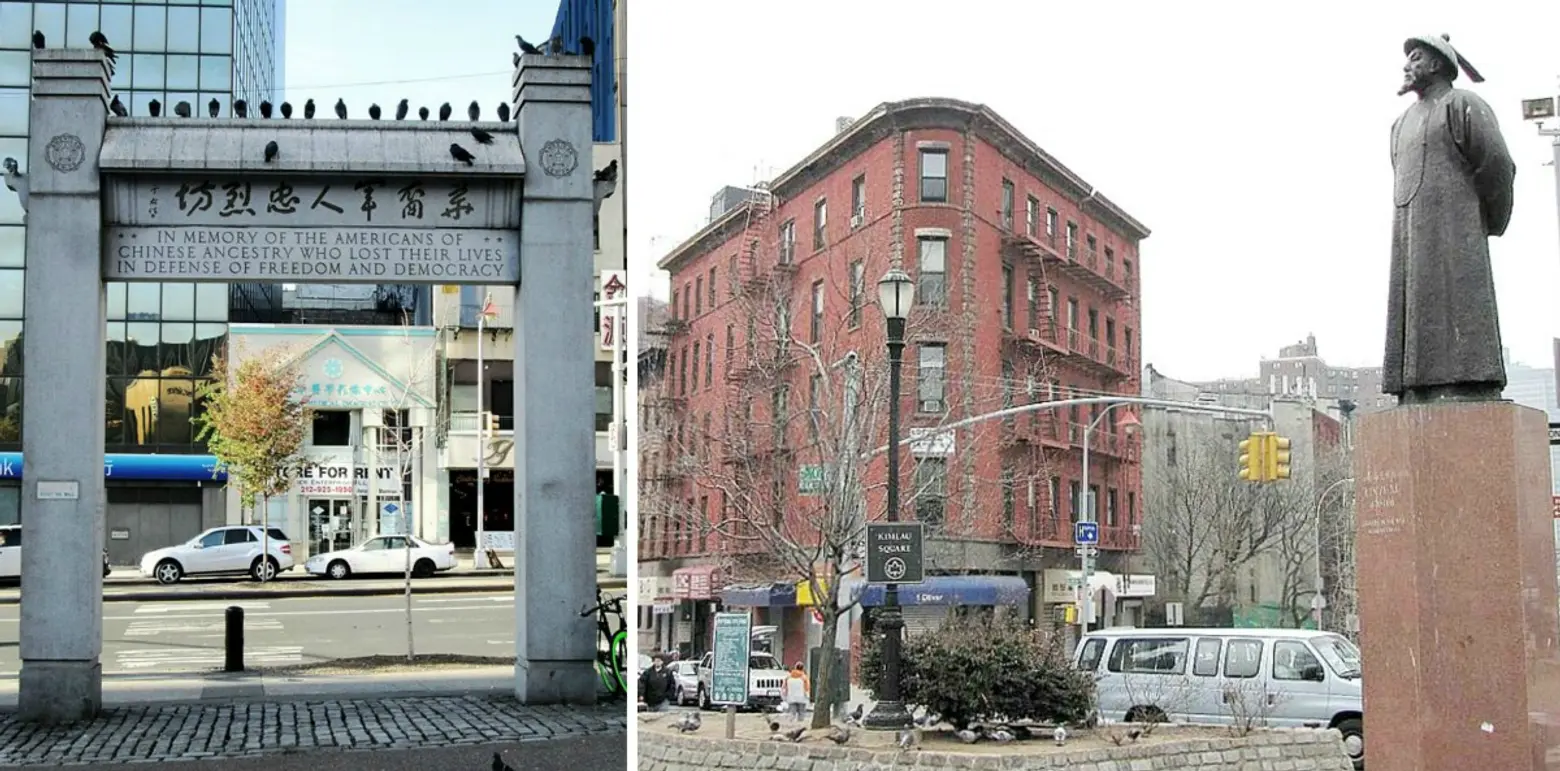
The Kimlau Square Arch designed by Lee (L) and the rest of Kimlau Square (R) via Wiki commons
In addition to the Merchants’ Association building, a highly visible and noteworthy extant design by Lee is the World War II monument in Kimlau Square, erected in 1962 at the intersection of Park Row, Oliver Street and East Broadway. It honors Americans of Chinese ancestry symbolized by the statue of Benjamin Ralph Kimlau (1918-1944), a Chinese-American bomber pilot who was shot down in an operation near New Guinea during that war.
RELATED:
